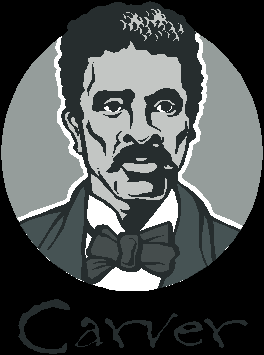A WEED IS A FLOWER THE LIFE OF GEORGE
A WEED IS A FLOWER THE LIFE OF GEORGEALTAR FLOWERS EACH SUNDAY THERE ARE FLOWERS ON OUR
APPLICATION TO INSTALL BANNERS HANGING FLOWER BASKETS AND SEASONAL
“FRIENDSHIP FLOWERS” TEACHES ABOUT FRIENDSHIP! SUBJECT SOCIAL STUDIES GRADES
Ðïࡱáþÿ ¥á` Ø¿x8c0bjbjx9ax9a 7tfðfðx8c(ÿÿÿÿÿÿ¤xxxxxxxx8cððððt4!bx91x³zz³³x91xxzz¦³x8exzxzk³kxxzx Ðxwx97otëðaro¼0ìì!³rì!ì!xz¸ä«zzzx91x91 Zzzì³³³³x8cx8cx8cdðx8cx8cx8cðx8cx8cx8cxxxxxxÿÿÿÿ Wildflower Poll
CUT FLOWER VARIETY TRIALS ITHACA NY 2004 H C
The peanut plant is a legume
A
Weed is a Flower
The
Life of George Washington Carver
by
Aliki


Characters: Scientist 1, Scientist 2, Scientist 3,
Scientist 4, & Professor Carver
Scientist 1: George Washington Carver was born in Missouri in 1860 – more than a hundred years ago. It was a terrible time.
Scientist 2: Mean men rode silently in the night, kidnapping slaves from their owners and harming those who tried to stop them.
Scientist 3: One night, a band of these men rode up to the farm of Moses Carver, who owned George and his mother, Mary.
Scientist 4: Everyone ran in fear.
Professor Carver: But before my mother, Mary, could hide me, the men came and snatched us both, and rode away into the night.
Scientist 1: Moses Carver sent a man to look for them.
Scientist 2: Mary was never found.
Scientist 3: But in a few days, the man returned with a small bundle wrapped in his coat and tied to the back of his saddle.
Professor Carver: It was me, George.
Scientist 4: Moses and his wife, Susan, cared for Mary’s children.
Professor Carver: I remained small and weak.
Scientist 1: But as George grew, they saw he was an unusual child.
Scientist 2: He wanted to know about everything around him.
Scientist 3: He asked about the rain, the flowers, and insects.
Scientist 4: He asked questions the Carvers couldn’t answer.
Professor Carver: When I was very young, I kept a garden where I would spend hours each day caring for my plants. If they weren’t growing well, I found out why.
Scientist 1: Soon the plants were healthy and blooming.
Scientist 2: In winter, he covered his plants to protect them.
Scientist 3: In spring, he planted new seeds.
Professor Carver: I looked after each plant as though it was the only one in my garden. Neighbors began to ask my advice about their plants, and soon they began to call me …
Scientist 1, 2, 3, 4: the Plant Doctor.
Scientist 4: As time went on, George wondered about more and more things. He wanted to learn and yearned to go to school.
Scientist 1: In the meantime, the slaves had been freed, but schools nearby were not open to blacks.
Professor Carver: So when I was ten, I left my brother, my garden, and the Carver farm and went off to find the answers to my questions.
Scientist 2: Wherever George Washington Carver found schools, he stayed. He worked for people to earn his keep.
Professor Carver: I scrubbed their floors, washed their clothes, and baked their bread.
S

Scientist 4: Some people took George in as their son.
Scientist 1: First he stayed with Mariah and Andy Watkins, who were like parents to him.
Scientist 2: Then he moved to Kansas and lived with “Aunt” Lucy and “Uncle” Seymour. They too loved this quiet boy who was so willing to help.
Professor Carver: I worked hard for many years, always trying to save enough money for college.
Scientist 3: Other boys, who had parents to help them, were able to enter college much sooner than George.
Professor Carver: I was thirty before I had saved enough.
Scientist 4: Still, it was not that simple. Not all colleges would admit blacks, even if they had the money to pay.
Professor Carver: I became very discouraged. I moved to Iowa and found a college which was glad to have a black student.
Scientist 1: At college, George continued to work.
Professor Carver: I opened a laundry where I washed my schoolmates’ clothes.
Scientist 2: And, he continued to learn. His teachers and friends soon realized that this earnest young man was bursting with talents.
Scientist 3: George played the piano, sang beautifully, and was an outstanding painter.
Professor Carver: In fact, for a time I thought of becoming an artist. But the more I thought of what I wanted to do, the more I wanted to help my people.
Scientist 4: It was at this time he remembered that his neighbors used to call him the Plant Doctor.
Scientist 1: He had never forgotten his love for plants. In all the years he had wandered, he always had something growing in his room.
Scientist 2: So, George Washington Carver chose to study agriculture.
P

Scientist 3: He often said:
Scientist 1, 2, 3, 4: A weed is a flower growing in the wrong place.
Professor Carver: I still asked questions. If no person or book could answer them, I found the answers myself.
Scientist 4: He experimented with his own plants, and found secrets no one else knew.
Professor Carver: When I finished college, I began to teach.
Scientist 1: He was asked to go to Alabama, where a college for blacks needed his talent.
Scientist 2: It was there, at Tuskegee Institute, that George Washington Carver made his life.
Scientist 3: In Alabama, Professor Carver taught his students and the poor black farmers, who earned their livelihood from the soil.
Scientist 4: He taught them how to make their crops grow better.
Professor Carver: Most of the farmers raised cotton. But sometimes the crops were destroyed by rain or insects, and farmers couldn’t earn enough to eat.
Scientist 1: Professor Carver told them to plant other things as well.
Scientist 2: Sweet potatoes and peanuts were good crops.

Professor Carver: They were easy to grow.
Scientist 3: He said that raising only cotton harmed the soil.
Scientist 4: It was better if different crops were planted each year.
Scientist 1, 2, 3, 4: The farmers did not want to listen.
Professor Carver: They were afraid to plant peanuts and sweet potatoes. They were sure that no one would buy them.
S

Professor Carver: I made soap, coffee, and starch.
Scientist 2: He made more than a hundred things from the sweet potato.
Scientist 3: And even though people in those days called peanuts “monkey food,” Professor Carver said they were good for people, too.
Scientist 4: Besides, he found that still more things could be made from the peanut.
Professor Carver: Paper, ink, shaving cream, sauces, linoleum, shampoo, and even milk! In fact, I made three hundred different products from the peanut.
Scientist 1: Once, when important guests were expected at Tuskegee, Dr. Carver chose the menu.
Scientist 2: The guests sat around the table and enjoyed a meal of soup, creamed mock chicken, bread, salad, coffee, candy, cake, and ice cream.
Scientist 3: Imagine their surprise when they learned that the meal was made entirely from peanuts!
Scientist 4: Slowly, the farmers listened to George Washington Carver.
Professor Carver: They planted peanuts and sweet potatoes. Before they knew it these became two of the most important crops in Alabama.
Scientist 1: Soon the whole country knew about Dr. Carver and great things he was doing. He was honored by Presidents and other important people.
Scientist 2: Every day, his mailbox bulged with letters from farmers and scientists who wanted his advice.
Professor Carver: I was offered great sums of money, which I turned down. Money was not important to me. I didn’t even bother to cash many of the checks I received.
Scientist 3: Throughout his life, George Washington Carver asked nothing of others. He sought only to help.
Professor Carver: I lived alone and tended to my own needs. I washed my clothes and patched them, too. I used the soap I made and ate the food I grew.
Scientist 4: Dr. Carver was asked to speak in many parts of the world, but he did not leave Tuskegee often.
Scientist 1: He had things to do.
Professor Carver: I continued to paint. I worked in my greenhouse…
Scientist 2: and in his laboratory, where he discovered many things.
Professor Carver: I discovered that dyes could be made from plants, and colors from the Alabama clay.
Scientist 3: Even when he was over eighty and close to death, Dr. Carver kept working.
Scientist 4: Night after night, while the rest of the town lay asleep, a light still shone in his window.
Scientist 1: The baby born with no hope for the future grew into one of the great scientists of his country.
All: George Washington Carver,
S

Scientist 3: helped not only his own people,
All: but all peoples of the world.
EL ENTORNO NATURAL Y CULTURAL TÍTULO DEL PROYECTO FLOWERS
FAQ’S WEBSITE FLORALIFE CRYSTAL CLEAR® FLOWER FOOD 1 Q
FLOWERS 33 6 SWEET PEAS 1 J HATTON
Tags: flower the, a flower, flower, george
- PROCEDURE FOR SETTING OUT EVSTYPE DRY ICE (CARBON DIOXIDE)
- REQUEST TO ANSWER SPECIFIC QUESTIONS FAMILY COURT RULES 2021
- SAMOSTALNI SINDIKAT ZAPOSLENIH U PREDŠKOLSKOM OSNOVNOM I SREDNJEM OBRAZOVANJU
- GUIDELINES FOR “MENTOR” ROLES AND RESPONSIBILITIES INTRODUCTION
- RADIONICE RAZVOJA PROFESIONALNIH VEŠTINA IZGRADNJA USPEŠNE KARIJERE U USLOVIMA
- MUNICIPALIDAD DISTRITAL DE CONGAS PROVINCIA DE OCROS REGION ANCASH
- BEHAVIORAL CONFIRMATION 1 CONSTRUING AND CONSTRUCTING OTHERS ON
- NESECRET R O M Â N I A MINISTERUL
- MONITOREO DE LA IMAGEN DE LAS MUJERES INDÍGENAS EN
- A FEW FACTS ABOUT CLEVELAND SCHOLARSHIP PROGRAMS WHAT IS
- PRACTICA I SOLUBILIDAD DE COMPUESTOS ORGANICOS CLASIFICACIÓN DE LOS
- UNITED STATES DEPARTMENT OF EDUCATION WASHINGTON DC 20202 MEMORANDUM
- AKDENİZ ÜNİVERSİTESİ YABANCI DIL ÖĞRETIMI VE SINAV YÖNERGESI
- © 2006 2020 BY THE LANDLORD PROTECTION AGENCY
- FORMAT OF OTHER BACKWARD CLASS CERTIFICATE FORM OF CERTIFICATE
- РУССКИЙ ENGLISH MEDTORRENTSCOM ЦЕНТР РЕГИСТРАЦИИ ДОМЕНОВ RUCENTER
- SNOWPACK DEVELOPMENT AND ABLATION ON GLACIERS AND ALPINE AREAS
- UVOĐENJE KORIŠTENJA OBNOVLJIVIH IZVORA ENERGIJE U KUĆANSTVIMA PRIMORSKOGORANSKE ŽUPANIJE
- ROMANTIC MOTIVES AND COSTLY SIGNALING 25 RUNNING HEAD ROMANTIC
- CĂLĂTORIILE ÎN URSS CA SPECIALIST ÎN INFORMATICĂ LA ŞEDINŢELE
- TEMELJEM ČLANKA 1043 STAVKA 1 TOČKE 3 POMORSKOG ZAKONIKA
- FORM NP Nº FECHA (USO CONAF) NORMA DE MANEJO
- MANIFIESTO DE LA MANCOMUNIDAD DE MUNICIPIOS VALLE DEL ALMANZORA
- BESTELLFORMULAR ZUM BEZUG VON APOTHEKENWAREN FÜR MITARBEITER DER UNIVERSITÄT
- PLEMENÁRSKE SLUŽBY SLOVENSKEJ REPUBLIKY ŠTÁTNY PODNIK STAROHÁJSKA 29
- GWI HYDRAULIC CONNECTIVITY DETERMINATION FORM ANALYSIS OF WATER QUALITY
- COMERCIOS MOJÁCAR PUEBLO NOMBRE ESTABLECIMIENTO TELÉFONO DIRECCIÓN ESPECIALIDAD PÁGINA
- TUTORIAL DE DESCARGA DEL CMAPTOOLS IR A LA SIGUIENTE
- 10 STEPS TO WRITING CLEAR DOCUMENTS BY DAVID
- CONDUCTING AND USING ENERGY EFFICIENCY POTENTIAL STUDIES FOR STATES
 U NIVERSIDAD NACIONAL EXPERIMENTAL DEL TACHIRA UNIDAD DE ADMISION
U NIVERSIDAD NACIONAL EXPERIMENTAL DEL TACHIRA UNIDAD DE ADMISIONCARDIAC REHAB REFERRAL ORDER PATIENT DATA DATE NAME
GLAVNE PREDVIDENE SPREMEMBE ZAKONA O DAVKU OD DOHODKOV PRAVNIH
 NAME OF PHARMACY I G INTERNAL AUDIT CHECKLIST AUDIT
NAME OF PHARMACY I G INTERNAL AUDIT CHECKLIST AUDITUSING LEARNING JOURNALS SOME GUIDANCE MATERIALS JENNY MOON CENTRE
 RESIDUES OF GENERALIZED BINOMIAL COEFFICIENTS MODULO A PRODUCT
RESIDUES OF GENERALIZED BINOMIAL COEFFICIENTS MODULO A PRODUCT LA CANYADA ACOGERÁ UN TALLER RELACIONADO CON LA MÚSICA
LA CANYADA ACOGERÁ UN TALLER RELACIONADO CON LA MÚSICAACTIVIDAD 4 ANÁLISIS DE UN EVENTO QUE AFECTÓ LA
UNIDAD 6 HUMBOLDT Y EL RELATIVISMO LENGUA ACCIÓN Y
ATTACHMENT 2 ITEM 3A1 NOVEMBER 21–22 2013 ELAELD SMC
 EXCMO AYUNTAMIENTO DE ZAMORA SERVICIO CONTRATACIÓN SUM0717 PLIEGO DE
EXCMO AYUNTAMIENTO DE ZAMORA SERVICIO CONTRATACIÓN SUM0717 PLIEGO DE QUOTES FROM “THE CONQUEST OF HAPPINESS” BY BERTRAND RUSSELL
QUOTES FROM “THE CONQUEST OF HAPPINESS” BY BERTRAND RUSSELL COC NEDERLAND REFNR 19045 6301 AMSTERDAM DECEMBER 20
COC NEDERLAND REFNR 19045 6301 AMSTERDAM DECEMBER 20MIDTERM STUDY GUIDE ESPAÑOL 2 SEÑORITA TARVIN REPASO 1
 AYUNTAMIENTO EL PUERTO SANTA MARÍA CONCEJALÍA DE IGUALDAD VIOLENCIA
AYUNTAMIENTO EL PUERTO SANTA MARÍA CONCEJALÍA DE IGUALDAD VIOLENCIA ÉLABORATION ET MISE EN ŒUVRE DUN PLAN DE COMMUNICATION
ÉLABORATION ET MISE EN ŒUVRE DUN PLAN DE COMMUNICATION R EPETYTORIUM DLA UCZNIÓW LICEÓW I TECHNIKÓW POZIOM PODSTAWOWY
R EPETYTORIUM DLA UCZNIÓW LICEÓW I TECHNIKÓW POZIOM PODSTAWOWY ECETRANSWP29GRSG200611 PAGE 0 UNITED N ATIONS E
ECETRANSWP29GRSG200611 PAGE 0 UNITED N ATIONS E GESETZ ÜBER DIE ERHEBUNG EINER ABGABE FÜR DIE GEBIETLICHE
PREZYDENT MIASTA LUBLIN DZIAŁAJĄC NA PODSTAWIE ART 11 I